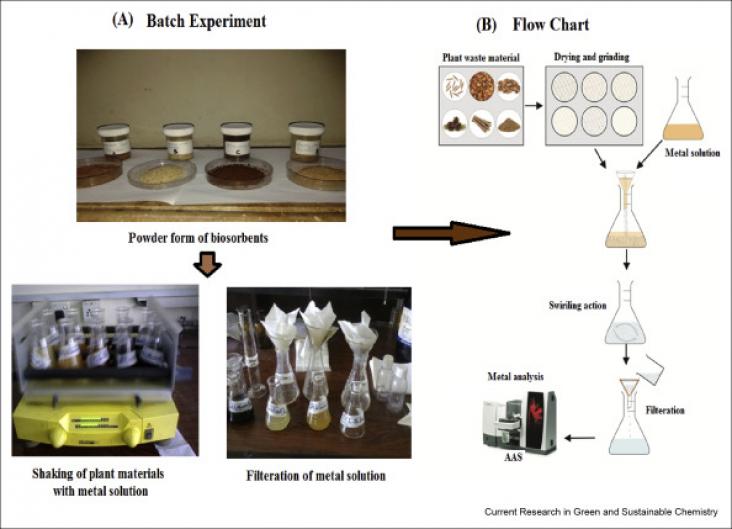This chapter advances SDG 6, 11, and 14 by providing avenues for the application of sustainable bio-based polymers in wastewater treatment and their role in removing pesticides, to support clean water, a healthy ecosystem, and sustainable consumption.
In 2016, the World Health Organization declared that ‘Health is one of the most effective markers of any city's successful sustainable development’ (World Health Organisation, 2016).
This chapter focuses in the importance of freshwater for domestic use, which is critical for maintaining human health and well-being. As the human population has grown, the pressure of domestic use on freshwater systems has increased. Despite mounting concerns over diminishing water quantity and quality, new opportunities for safe and accessible domestic water use are being implemented.

This research explores the use of indigenous waste plant materials for an easy and cost-effective approach for the removal of heavy metals from water.
The empirical analysis shows that unregulated water vending makes households without connection to pay higher tariffs for water. The paper among others recommends that tariffs at which vendors should sell water to customers should be set and closely monitored in order to ensure that households without connections have access to water at reasonable tariffs.
Multidisciplinary analytical techniques allow us to examine the presence and behaviour of pollutants in complex atmospheric, terrestrial, aquatic, and living compartments of ecosystems. This book chapter advances SDGs 6, 13 and 15.
This book chapter advances SDG 3 and 6 by describing properties of water and importance of water to biomaterials and biology.
This chapter advances SDG 6, 11, and 13 by explaining how droughts have long played a major disruptive role in history, threatening the stability of human society. Here, we briefly review the relationship between civilizations and drought, stressing the link between agriculture and drought impacts.
This chapter advances SDG 6 and 11 by exploring the technological landscape of water purification in India, focusing on strategies for treatment of wastewater as a potential water source.
This chapter advances SDG 6 and 11 by reporting on the various laws and policy governing water supply in South Africa as well as the current state of water and wastewater infrastructure in South Africa.
